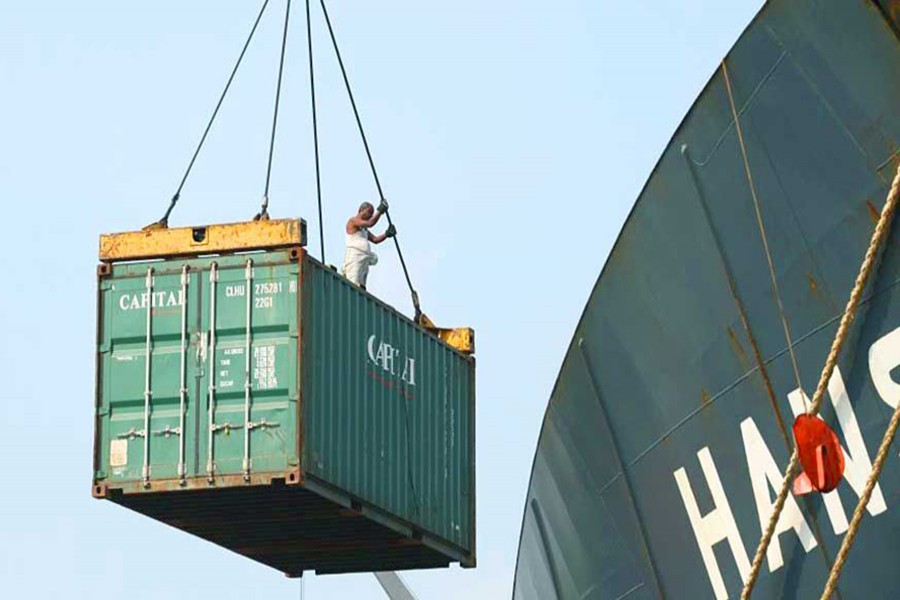
Published :
Updated :

Re-export, also known by its French origin as entrepôt trade, refers to a trading practice in which goods are imported into a country and subsequently re-exported to another without repackaging or any additional processing. A sort of rotating door---entrance from one side and exit from the other! The entrepôt functions as an intermediary or middleman in the trading process, facilitating movement and exchange of goods between different countries or regions. Re-exports are a critical component of international trade, accounting for approximately a quarter of total exports, with Hong Kong, Singapore, and the UAE being among the world's leading re-export hubs.
In this era of global interdependence, regional connectivity, trade facilitation, and cooperation are more important for sustainable economic growth. Bangladesh, strategically located on the north of the Bay of Bengal, can play a pivotal role as a re-export hub for its neighbouring countries, particularly the landlocked Himalayan nations of Nepal and Bhutan, as well as India's Northeast region. A recent report carried in this newspaper says that the value of goods re-exported from Bangladesh to neighbouring countries and regions has been fluctuating in recent months. It was Tk2,357 million in November and Tk 9,404 million in December 2023. A similar trend was also witnessed in the first four months of the current financial year. This is, however, a normal development in external trade.
Economists envisage even higher re-export volumes in the future, citing the substantial populations of neighbouring economies like Nepal and Bhutan. To fully harness Bangladesh's potential as a re-export hub, Dr Ahsan H Mansur, executive director of the Policy Research Institute of Bangladesh, rightly emphasised the need for further connectivity enhancements to attract more re-exports, enabling Bangladesh to earn multiple charges from such trade. While the Matarbari Deep Sea Port, if and when becomes a major transshipment hub in the region, will be a game-changer for Bangladesh, it is also necessary not to ignore, but enhance the capacity of other seaports as well. The simultaneous efficient handling of these seaports is imperative to reduce lead times and streamline trade logistics, facilitating faster and more efficient movement of goods. There's also a need for improving connectivity by developing interconnected road corridors linking seaports, land ports, border crossing points and other crucial infrastructures. Developing a multimodal transport system by integrating road, rail, waterways, and air travel for seamless movement of goods is a must to obtain the maximum benefit. Currently, Bangladesh has one of the highest transportation costs in the region. Competitive logistics costs and faster delivery time are necessary not only to attract neighbouring countries to avail of Bangladesh's re-export facility more, but also to increase the country's export competitiveness and attract more foreign investment.
Additionally, ensuring the smooth transit of goods to Nepal and Bhutan through India is essential. Moreover, the government should explore options to increase tariffs justifiably, considering the negligible earnings from facilitating re-export and transportation of goods. Bangladesh's role as a major re-export hub will not only enhance its own revenue collection, but also foster greater regional connectivity and collaboration. It is time, therefore, for Bangladesh to prepare for meeting the challenge of increasing regional connectivity and leverage the power of trade to deliver long-term growth locally, regionally, and globally.


 For all latest news, follow The Financial Express Google News channel.
For all latest news, follow The Financial Express Google News channel.